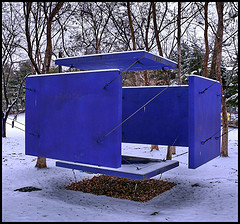 People often think of the Buddhist idea of detachment as something cold and distant. The truth is, detachment occurs naturally when you understand how it is inherent in consciousness. It’s like being shown how a car is driven. From the outside, it looks as if the car is driving itself. But once you know there’s a driver, then the car becomes the vehicle being driven by someone.
People often think of the Buddhist idea of detachment as something cold and distant. The truth is, detachment occurs naturally when you understand how it is inherent in consciousness. It’s like being shown how a car is driven. From the outside, it looks as if the car is driving itself. But once you know there’s a driver, then the car becomes the vehicle being driven by someone.
I found the following quote by Alexander from a short article called Practicing Detachment: A short introduction to the F. M. Alexander Technique for Buddhist Practitioners. Alexander discovered, quite unwittingly I believe, a Western path to what has been for the most part an Eastern philosophical skill.
The fact to be faced is that the human self was robbed of much of its inheritance when the separation implied by the conception of the organism as “spirit”, “mind” and “body” was accepted as a working principle, for it left unbridged the gap between the “subconscious” and the conscious. I venture to assert that if the gap is to be bridged, it will be by means of a knowledge, gained through practical experience, which will enable us to inhibit our instinctive, “subconscious” reaction to a given stimulus, and to hold it inhibited while initiating a conscious direction, guidance, and control of the use of the self that was previously unfamiliar.
I suggest that only those who become capable of translating into practice what is involved in the procedure just described can justly claim to have experienced detachment in the basic sense.
F. M. Alexander, The Universal Constant in Living, 1946

Nice quote! A great recourse to learn more about the Alexander Technique can be found at http://alexandertechnique.com
Garnet, I don’t understand any of this, but I’m glad that you seem to.
Peace,
Betty